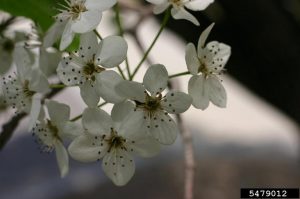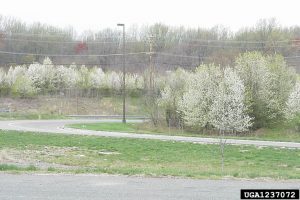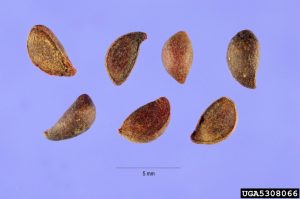Callery Pear or Bradford Pear

Your help is needed to spot a new invasive tree moving into Wisconsin. It is call the Callery or Bradford pear. Because of our warm winter, many trees and shrubs are waking up early, so this new problem tree is likely to start blooming in the next few days or weeks. A serious problem throughout the south, east coast and Midwest, the Bradford pear has started showing up here in the badger state.

An import from southern Asia, the Bradford pear (Pyrus calleryana) is has been sold as an ornamental tree since the 1950s. It was bred to be self sterile, meaning flowers from that cultivar could not be fertilized by pollen from another Bradford pear. Unfortunately, if Bradford pear flowers receive pollen from a different kind of pear, like a Bartlett or Anjou, the resulting seed will grow up into a Bradford pear tree that can pollenate itself.

These trees were bred to produce a huge number of blossoms that are attractive to bees and fruit that birds love. The result is a tree that escaped into fields and woodlands, taking over large areas and creating dense thickets. Some individual trees also produce thorns that make them even more of a management problem.

The Wisconsin DNR is asking people, especially in southern Wisconsin, to be on the lookout for these trees and report a tree that you suspect might be a Bradford pear. For any wild pears, please photograph or collect a flowering stem if possible, and send them information on the size and location of the population to invasive.species@wi.gov.
